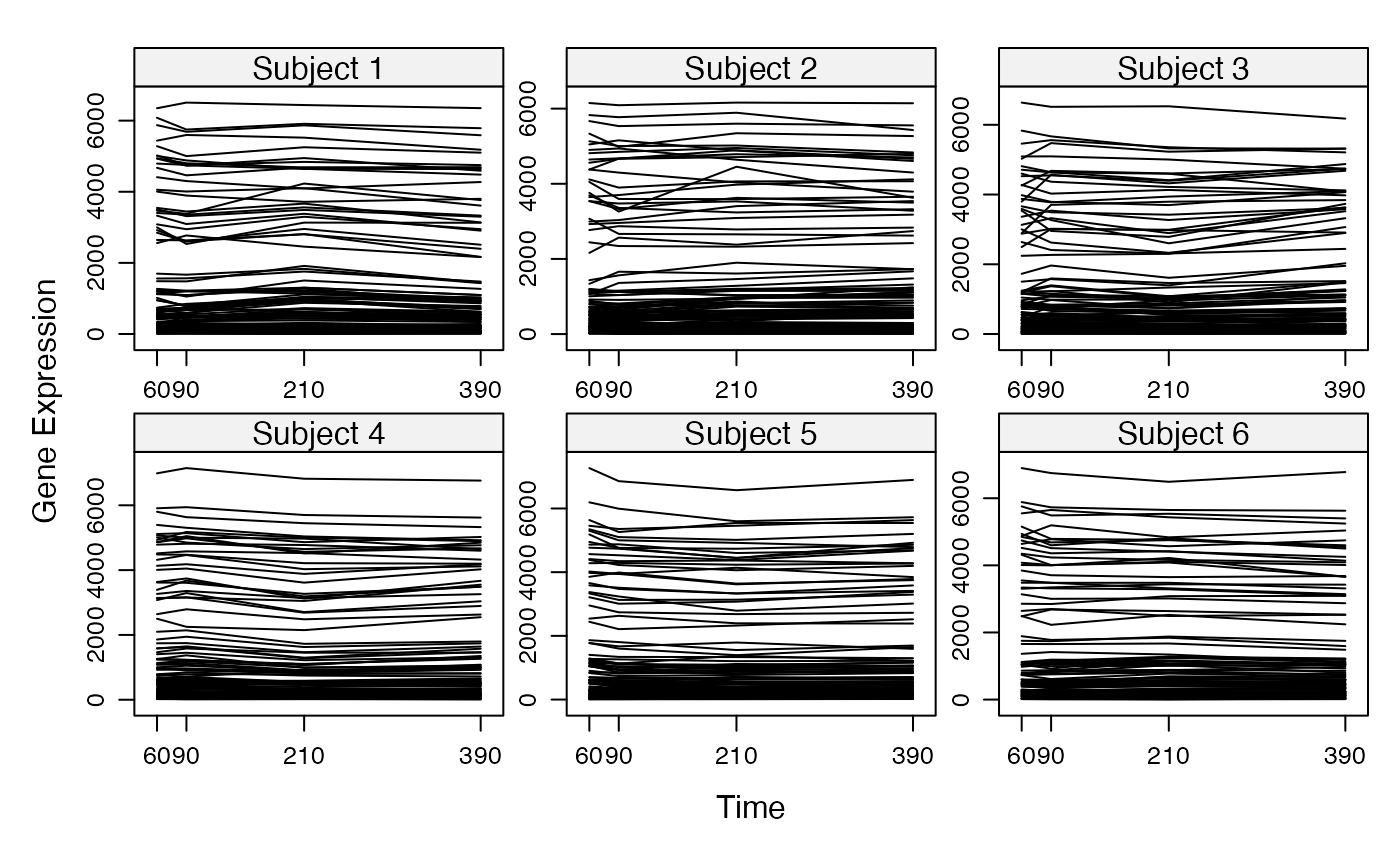Considering the class of the argument which is passed to plot, the graphical output differs.
Usage
# S4 method for class 'omics_array,ANY'
plot(x, y, ...)
# S4 method for class 'omics_network,ANY'
plot(
x,
y,
choice = "omics_network",
nv = 0,
gr = NULL,
ini = NULL,
color.vertex = NULL,
color.edge = NULL,
video = TRUE,
weight.node = NULL,
ani = FALSE,
size = c(2000, 1000),
label_v = 1:dim(x@omics_network)[1],
horiz = TRUE,
legend.position = "topleft",
frame.color = "black",
label.hub = FALSE,
nround = 2,
ani.img.name = "Rplot",
ani.imgdir = "images",
ani.htmlfile = "index.html",
outdir,
ani.group.legend = "Cluster",
layout = ini,
alpha = 1,
pixmap.color = terrain.colors(20),
...
)
# S4 method for class 'omics_predict,ANY'
plot(
x,
time = NULL,
label_v = NULL,
frame.color = "white",
ini = NULL,
label.hub = FALSE,
edge.arrow.size = 0.7,
edge.thickness = 1
)Arguments
- x
a omics_array object, a omics_network object or a omics_predict object
- y
optional and not used if x is an appropriate structure
- ...
additional parameters
- choice
what graphic should be plotted: either "F" (for a representation of the matrices F) or "network".
- nv
the level of cutoff. Defaut to `0`.
- gr
a vector giving the group of each gene
- ini
using the “position” function, you can fix the position of the nodes.
- color.vertex
a vector defining the color of the vertex.
- color.edge
color of the edges
- video
if ani is TRUE and video is TRUE, the result of the animation is saved as an animated GIF.
- weight.node
nodes weighting. Defaults to `NULL`.
- ani
animated plot?
- size
vector giving the size of the plot. Default to `c(2000,1000)`.
- label_v
vector defining the vertex labels.
- horiz
landscape? Defaults to `TRUE`.
- legend.position
position of the legend.
- frame.color
color of the frames.
- label.hub
logical ; if TRUE only the hubs are labeled.
- nround
number of digits to display
- ani.img.name
name of image file for animations
- ani.imgdir
name of the image directory for animations
- ani.htmlfile
name of the html file for animations
- outdir
name of the outdir for animations
- ani.group.legend
legend for animations
- layout
layout of the graphs
- alpha
transparency of the graphs
- pixmap.color
color for pixmap graphs
- time
sets the time for plot of the prediction. Defaults to `NULL`
- edge.arrow.size
size of the arrows ; default to 0.7.
- edge.thickness
edge thickness ; default to 1.
Methods
- list("signature(x = \"omics_array\", y = \"ANY\",...)")
- x
a omics_array object
- list_nv
a vector of cutoff at which the network should be shown
- list("signature(x = \"omics_network\", y = \"ANY\",...)")
- x
a omics_network object
- list()
Optionnal arguments:
- gr
a vector giving the group of each gene
- choice
what graphic should be plotted: either "F" (for a representation of the matrices F) or "network".
- nv
the level of cutoff. Defaut to 0.
- ini
using the “position” function, you can fix the position of the nodes
- color.vertex
a vector defining the color of the vertex
- ani
vector giving the size of the plot. Default to c(2000,1000). The animation can only be created in the working directory. See the help page of the animation method.
- video
if ani is TRUE and video is TRUE, the animation result is a GIF video
- label_v
vector defining the vertex labels
- legend.position
position of the legend
- frame.color
color of the frames
- label.hub
logical ; if TRUE only the hubs are labeled
- edge.arrow.size
size of the arrows ; default to 0.7
- edge.thickness
edge thickness ; default to 1.
- list("signature(x = \"omics_predict\", y = \"ANY\",...)")
- x
a omics_predict object
- list()
Optional arguments: see plot for omics_network
Examples
if(require(CascadeData)){
data(micro_US, package="CascadeData")
micro_US<-as.omics_array(micro_US[1:100,],time=c(60,90,210,390),subject=6)
plot(micro_US)
}

